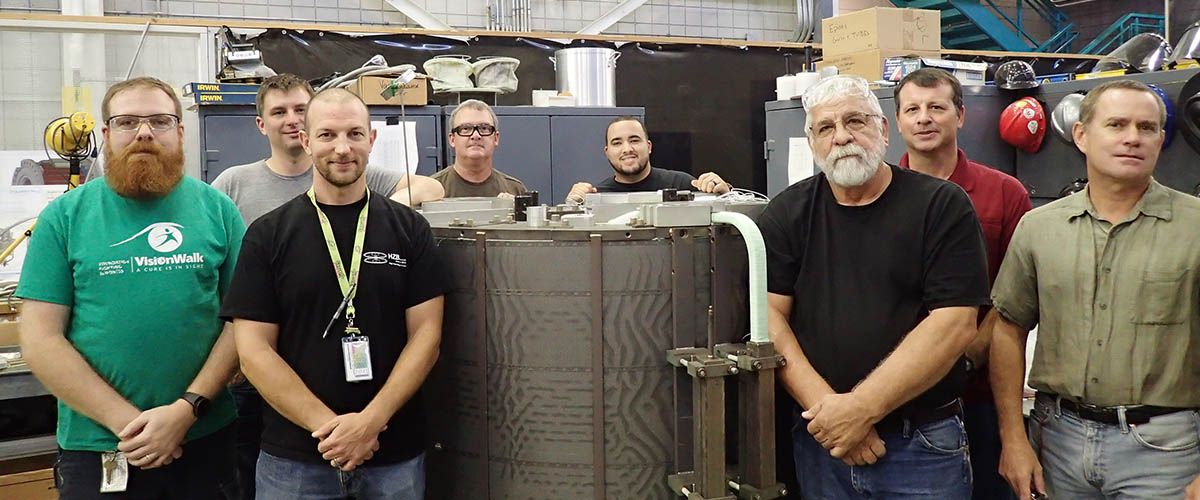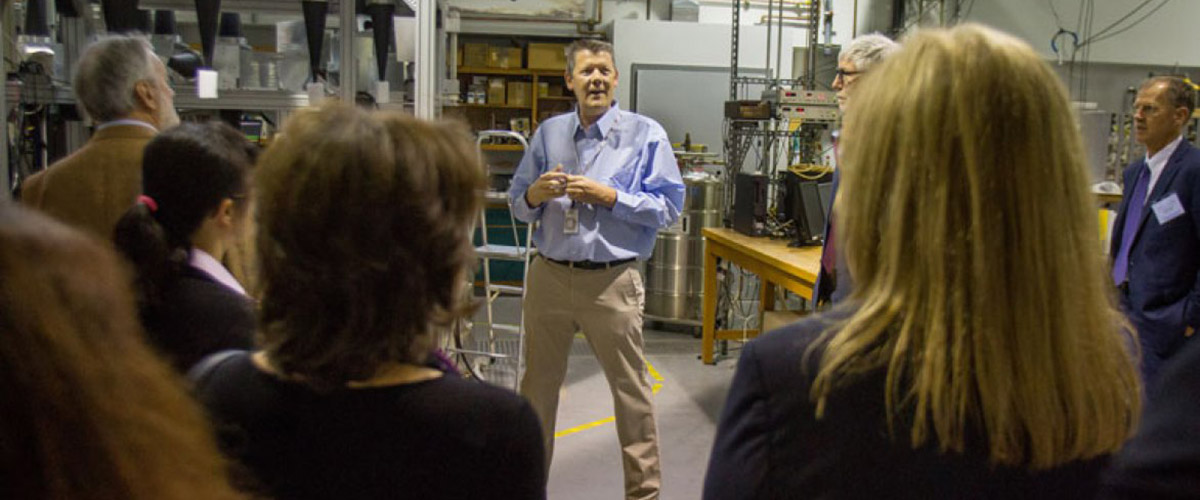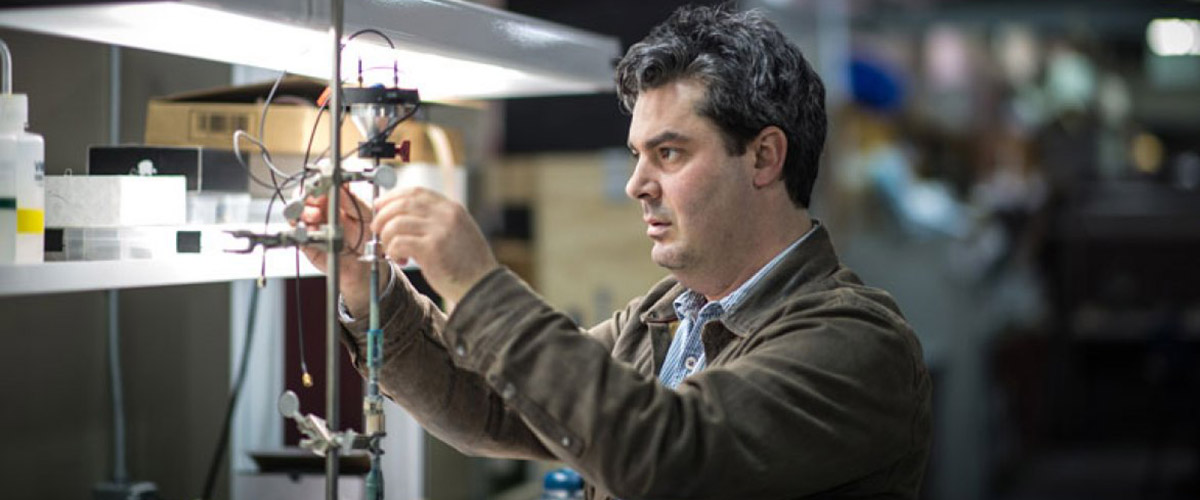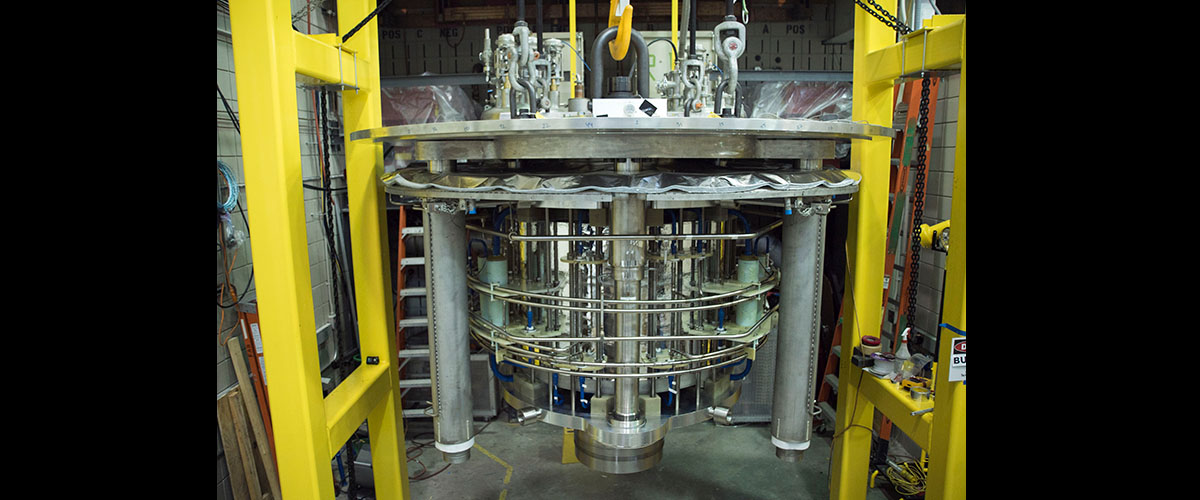Contact: Kristin Roberts
TALLAHASSEE, Fla. — Engineers at the National MagLab have completed a superconducting magnet that, after being installed in a European laboratory, is expected to tie the world record established at the National MagLab way back in 2000.
After the 13-tesla superconducting magnet, built at the MagLab for the High Field Magnet Laboratory (HFML) in Nijmegen, the Netherlands, is combined with a 32-tesla resistive magnet under development in Nijmegen, the resulting hybrid system is projected to reach 45 teslas, a world-record field that for decades has been held exclusively by the National MagLab’s 45-tesla hybrid magnet. (Tesla is a unit of magnetic field strength; a refrigerator magnet has a field strength of about 0.01 tesla; the strength of a magnet in a typical MRI machine is 1.5 or 3 teslas).
It wouldn't have happened without the magnetic partnership between the two facilities.
"They've wanted for a long time to have a 45-tesla magnet," said MagLab engineer Iain Dixon, who oversaw construction of the new superconducting magnet for his Dutch colleagues. "They wanted initially to do their own thing. But the project went much faster by partnering with us."
So the HFML engineers turned to experts at the MagLab's Magnet Science and Technology (MS&T) division, who came up with a design to make the HFML's magnet dreams come true.

The magnet was delivered to the HFML in Nijmegen in March.
The MagLab was able to achieve its own long-standing, world-record 45-tesla magnet (one of 16 world records currently held by the lab) by combining a superconducting magnet made of niobium-tin (Nb3Sn) and niobium-titanium (NbTi) and a resistive magnet made of copper, silver, beryllium and zirconium. By meshing two kinds of magnets into a unique hybrid system, engineers were able to work around limitations inherent in the materials. The MagLab's "45T" has long been the facility's most in-demand magnet among physicists, who vie for the opportunity to spend a week using the magnet to probe semiconductors, superconductors and other exotic materials.
The new Nijmegen hybrid will match the MagLab's hybrid in strength. But thanks to innovations in magnet technology in the two decades since the first one was built, the new instrument features several key improvements. It uses a more advanced recipe for Nb3Sn that packs in more tin and carries more current. (The same recipe was used recently in the MagLab's 36-tesla Series Connected Hybrid, or SCH, magnet, a world-record system for nuclear magnetic resonance studies.) As a result, the superconducting magnet is more compact than its predecessor, featuring a single coil compared to the original’s three. Also, the Nijmegen magnet's cryogenic system, which keeps the instrument in the super-cold environment required for it to operate, is less complex than the one used for the MagLab’s 45 T because the magnet operates at a slightly higher temperature (4.5 Kelvin rather than 1.8 Kelvin).
The new, 15,000-pound magnet was shipped to the Netherlands in March. The system is projected to be up and running in about two years, said Dixon. But there's plenty of work to do before then, including building quench protection and cryogenic systems and completing and installing the resistive magnet. The MagLab will continue to assist with some of this work.
This superconducting magnet is one of a few magnet technology projects on which the two labs have collaborated. The MagLab previously delivered world-class resistive magnets as well as designed and built current leads for HFML, for example, while HFML tested the leads used in the SCH.
“The partnership has been very important to the success of this project, not just for the construction of the superconducting magnet, but also for the sharing of expertise in the development and testing of the current leads and the MagLab’s role in our technical advisory committee,” explained Nigel Hussey, the director of HFML. “The 45-tesla hybrid in Tallahassee has been a great success for the MagLab. We can’t wait to get ours up and running and see if we can’t make it a similar success story!”
The MagLab and HFML are two members of a small community of magnet labs around the world that both compete and collaborate. Part of the Global High Magnetic Field Forum, these labs together push technology forward for scientists who depend on high-field magnets to probe a wide variety of samples, from solid materials to human proteins to complex chemical mixtures.
"The MagLab has developed numerous magnets for laboratories around the world," said MS&T Director Mark D. Bird. "Typically this enables another lab to operate a better instrument for science than they could develop by themselves, while also helping to defray the costs of the MagLab’s own development of new magnet technologies. That is why it is so important to have collaborations like this."
How will Dixon, a MagLab veteran, feel when the completed magnet catches up with MagLab's record?
"I'll be quite proud when it reaches 45 T," Dixon said. "I won't feel bad at all."
Watch the Winding
Watch the making of the new magnet in the narrated time-lapse video below.
Story by Kristen Coyne, video by Stephen Bilenky.






